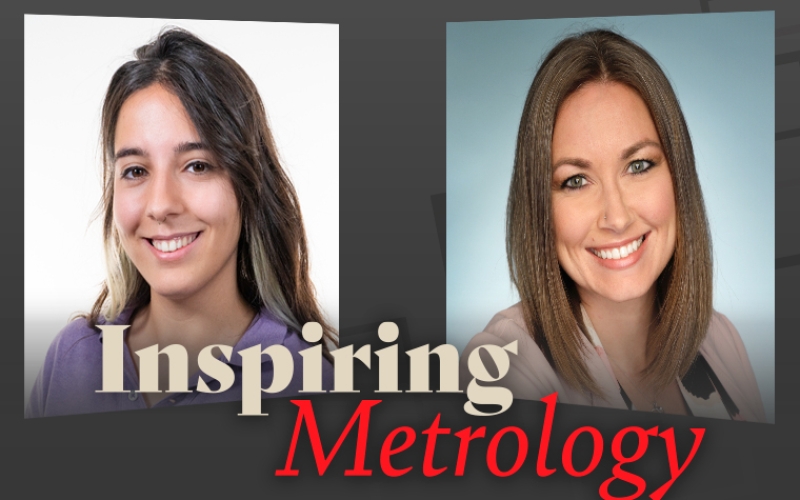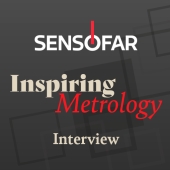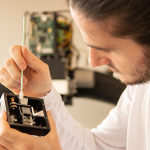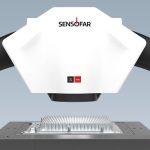
Inspiring Metrology: A conversation with Jackie Garofano
激励计量学:与CCAT首席技术官Jackie Garofano的对话
在最近的一次采访中,Sensofar的内容创作者兼应用专家Natalia Bermejo有机会与康涅狄格先进技术中心Connecticut Center for Advanced Technology (CCAT)的首席技术官Jackie Garofano进行了一次面对面的交流。在这次引人入胜的对话中,他们讨论了Sensofar的光学轮廓仪在制造生态系统中的变革性作用,以及尖端技术对产品质量和效率的影响。以下是这次采访的亮点:
Jackie Garofano,CCAT首席技术官解释说,CCAT与我们建立的战略合作伙伴关系在实现这一目标方面发挥了关键作用。Sensofar的光学轮廓仪,特别是S neox和S neox Five Axis系统,已经被安置在CCAT的先进技术中心,使它们可供制造商、创新者和研究人员使用。CCAT与Sensofar之间的合作促进了高精度3D光学计量技术在航空航天、国防和光学等多个行业的应用。
Sensofar光学轮廓仪的精度和性能使其成为制造生命周期中的关键工具,从设计和测试到验证和供应链管理。
多年来,计量工具在新兴技术领域取得了显著进展,尤其是在增材制造和微型化技术方面。据Jackie Garofano介绍,Sensofar的技术已经进化,以应对评估增材制造表面和微型化相关精细特征的挑战。Sensofar’s systems系统的用户友好体验、自动化功能和快速数据收集在支持制造商对表面进行准确且无损评估方面发挥了关键作用。
Jackie Garofano 强调,与 Sensofar 合作的独特价值不仅在于其尖端技术。参与其中的团队,包括美国销售经理 Adam M. Platteis 和全球团队,支撑了这次合作。Sensofar’s partnership 与 CCAT 的合作使他们能够向康涅狄格的公司介绍一整套工具,并突出匹配补助金的可用性,以补贴技术引进。对可靠技术的访问为 Sensofar 和制造商创造了双赢局面,加强了双方的关系
第 1 部分/2

第 2 部分/2

我是CCAT(康涅狄格先进技术中心)的首席技术官。我们总部位于康涅狄格州东哈特福德,也就是美国东北部地区。我们是一个应用研发中心,旨在推动尖端技术在制造生态系统中的应用。特别是,CCAT非常关注那些为更大的OEM厂商供应的小型和中型制造商,这些制造商推动了全球行业的进步。
有趣的是,当我在2021年初加入CCAT时,我刚刚结束了在雷神技术公司近十年的职业生涯。我最初是在当时的联合技术公司的研究中心工作,然后转到公司部门,负责一个面向整个企业的工程领导力发展计划。
在RTX的工作结束后,命运让我有机会加入CCAT担任技术领导者的角色。CCAT已经成立了近20年,而我早在研究生时期以及作为UTC的研究科学家时就已经与他们有接触。巧合的是,显微镜领域非常小。你们的美国区域销售经理在我还在研究中心工作时曾与我合作,并向我介绍了Sensofar与CCAT的合作。当时我们在康涅狄格州本地,因此讨论CCAT与Sensofar之间的合作非常有意义。通过合作,我们可以支持康涅狄格州的制造业生态系统,当然也包括整个东北地区。
自2021年以来,CCAT与Sensofar建立了战略合作伙伴关系,我们在先进技术中心安置了你们的技术设备,向大大小小的制造商、创新者和研究人员展示。我们有各种各样的人士前来咨询,因此在过去几年里,这次合作非常成功。
也许很难相信,但我已经做了近20年的研究。我很幸运在大学一年级时就开始做材料研究,当时主要集中在高分辨率电子显微镜方面。在研究生期间,我对计量学有所了解,但作为一名实践实验者,我并未亲自参与计量工作。直到获得博士学位后进入工业界,我才开始接触3D光学轮廓仪。在过去十年间,这项技术得到了显著发展,而Sensofar无疑是这一领域的领军者之一。它的技术易于使用,自动化能力很强,并能快速收集数据。无论你是在工业界、学术界还是研究领域,这项技术都是一个强有力的工具。
我虽然不直接使用Sensofar的设备,但我的同事们对它评价非常高。由于我们能够实际操作这些设备,其他公司也开始购买Sensofar的技术。这种合作是双赢的,我们很高兴能在CCAT拥有Sensofar的技术。
作为前显微学家,我过去的研究是破坏性的,而如今能以非接触、非破坏性的方式评估表面特征,确实非常重要。直到进入工业界后,我才真正意识到这种需求的重要性。Sensofar的测量系统让来自不同领域的人士能够以极高的精度了解微小的表面特征。而随着制造业的数字化,这种快速收集准确数据的能力变得尤为关键。
我认为我代表了整个CCAT团队,我们与Sensofar合作最重要的是人。CCAT的使命是以人为本,我们希望能与各类技术供应商、联邦或州的合作伙伴以及私人资助的项目一起工作。你们的国际团队让我们不仅在康涅狄格州和东北地区有了立足之地,同时在全球范围内都能迅速解答我们遇到的任何问题。我们一起帮助制造公司接触技术,展示Sensofar工具的价值,并推动它们将这些工具应用到实际制造中。
许多客户的工作是专有的,因此我们有保密协议,不能深入讨论具体的成功案例。不过,我可以说,通过在我们的技术中心展示这项技术,企业看到了投资该技术的价值。他们将问题带到我们的技术中心,使用Sensofar的设备,可能是与Sensofar的工程师合作,也可能是由我们CCAT的工程师操作。
因此,有很多成功的案例。企业愿意投资这项技术,这对业务的持续成功至关重要。我们服务于多个行业的制造生态系统,虽然我们位于航空航天密集的东北地区,但我们的客户还包括光学、光电等领域的公司。Sensofar技术展示了其帮助公司通过快速、自动化的数据收集,提高效率的能力。
3D光学计量系统的精度,尤其是在增材制造或3D打印表面方面,确实有了很大进步。过去,我在研究增材制造的表面时面临技术上的挑战。如今,制造商能够更加精准地评估表面粗糙度、表面轮廓和非平面表面,尤其是在微型化领域,需要对非常精细的特征进行高精度评估。
你如何评价Sensofar系统在CCAT先进技术中心的用户体验?
我们有两台S neox系统,一台三轴和一台五轴设备。我们的技术团队对Sensofar工具的用户体验赞不绝口。特别是在面对技能型劳动力短缺的挑战时,Sensofar的技术让数据采集变得非常简便,并且自动化程度高。
我们有两台S neox系统,一台三轴和一台五轴设备。我们的技术团队对Sensofar工具的用户体验赞不绝口。特别是在面对技能型劳动力短缺的挑战时,Sensofar的技术让数据采集变得非常简便,并且自动化程度高。
我认为在CCAT先进技术中心拥有Sensofar设备给了我们很大的优势,因为我们经常有美国的销售经理和Sensofar团队的其他同事在这里,我们能够向康涅狄格州的公司介绍Sensofar的一系列工具。令人欣喜的是,康涅狄格州还有一个制造业匹配补助计划,用于补贴技术引进的成本,无论是硬件还是软件系统。因此,Sensofar是一个出色的合作伙伴,因为你们已经告诉康涅狄格州的公司,他们可以获得数万美元的匹配补助金来降低技术引进的成本障碍。
这项技术的激活门槛降低了。公司可以在我们的显微镜区域体验这项技术,与Sensofar的团队交流,甚至与CCAT合作,展示这项技术的具体用途。因此,拥有Sensofar作为全球合作伙伴,确实是一种双赢局面。
基于模型的系统工程、基于模型的设计、基于模型的定义,所有与数字化产品或零件创建数字双胞胎相关的技术。然后将其应用于整个制造生命周期,从设计到制造,再到测试验证和供应链管理……拥有这份数字化技术数据是非常关键的。
我们看到全球的公司、国防部和其他许多机构现在都要求我们变得更加数字化,使用系统工程以基于模型的工作流程来启用或激活工作流。因此,通过创建高分辨率的零件表面数字双胞胎,Sensofar技术支持我们尽可能多地获取数据。这些已知数据可以从原材料开始,贯穿制造过程,无论是增材制造、减材制造还是锻造,你都可以通过测试来验证。这些都为基于模型的工作流程和系统工程贡献了一部分。






